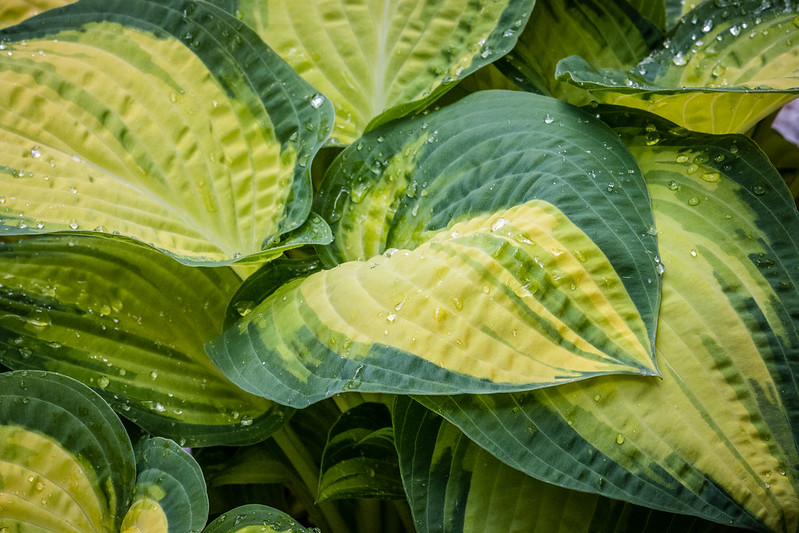Just as we begin to think about wrapping things up in the garden for the season, slugs slither out of their homes underground to lay their eggs for next year.
That means it’s time again to slug it out with one of the gardener’s most familiar, frustrating and certainly slimiest pests.
“What slugs want is a place that’s warm and moist,” said Claudia Groth, an Oregon State University Extension Service master gardener. “That’s why spring and fall is when they’re most active. They’ll be coming out soon to lay eggs.”
Slugs aren’t crazy about winter and summer. They bail from cold or hot weather. But fall and spring are agreeable seasons for slugs. In the perfect conditions of autumn when the heat starts to wane and the first rains come, the mollusks lay eggs in clusters called clutches, according to Groth, a horticulturist who has made slugs her specialty.
The eggs hatch fairly rapidly and the fast-growing slugs wait it out, showing up in spring to scrape and shred plant leaves with tongues lined with thousands of tiny, extremely sharp teeth. Eggs will mature slowly over winter and hatch in spring. Those laid in spring hatch more quickly. Also, many slugs overwinter as full-sized critters and are ready to go in spring.
“In fall, you’re trying to kill them off before they lay eggs,” she said. “In spring when your plants are poking their heads up, you need to protect them, because once the leaves are nipped, the damage is there all summer.”
The pests are particularly fond of lettuce and other salad greens, broccoli, beans, hostas, strawberries, primroses and daffodil flowers. More sturdy plants like ferns, sedums, ornamental grasses, bleeding heart, heuchera, hellebores and most herbs fend them off reasonably well. Woody plants are also usually unbothered.
Since slugs go on attack at night and look for protected places during the day, you’ll find them under ground covers or mulches and in thickly planted perennial or annual borders.
“Many gardeners grow plants tightly in their beds to keep weeds from growing,” Groth said. “That’s an environment that provides them with a 100 percent hiding place all day.”
Slugs will crawl beneath almost anything where it’s dark and moist, including boards, bricks, pots, loose stepping stones and pavers, and any debris left lying in the garden.
“So, the first thing to do when starting a control program is to clean up the garden,” she said. “Don’t leave things all over the yard. They can even hide under garden gloves.”
Raise pots onto bricks or “pot feet” purchased for that purpose. Pull mulch away from favorite plants. Remove weeds where the pests like to nestle down. Tidy under porches and other raised structures.
Although sanitation is the first line of defense, there are plenty of other methods for control. Get started now. Young plants are most susceptible. Here are Groth’s recommendations:
- Water in the morning. “If you water in the evening, it’s wet until early in the morning and you’ve given them the best environment when they come out at night hungry,” she said.
- Put out beer traps. Use a pie plate or bury a plastic yogurt or margarine container almost to the rim. Pour in beer. Remove dead slugs daily and refill with beer.
- Don’t use salt. It can build up in the soil and damage plants.
- Attract predators such as frogs, ground beetles and, yes, snakes.
- Create an artificial hiding place by placing a board in their favorite places. To make it especially attractive, grind up lettuce and brewer’s yeast (not baker’s yeast) and put that under the board. In the morning, lift the board and remove slugs. Drop them in a bucket of soapy water.
- Go out at night with a flashlight or head lamp and handpick them.
- Get a duck, which will make a quick dinner out of slugs, but be sure to check with your city first. Some don’t allow them and there are restrictions.
- Tape a wide (3–4 inches) strip of copper around the top of a pot or the top edge of a raised bed.
Also, you can use bait. There are two types. One is a synthetic bait that contains metaldehyde, which is toxic to humans and can be fatal to dogs if eaten in large amounts. The other contains iron phosphate, which is considered very low in toxicity, according to the National Pesticide Information Center at OSU, but has been known to sicken dogs in high amounts. It can be used in organic vegetable gardens.
When baiting, scatter rather than making piles or bands. “If you use piles or bands,” she explained, “slugs can go right by. If you scatter, they’re likely to encounter it.” Also, be sure to look on the label to see how much to use per square foot. It’s a lot less than most people think. Using more is not better.
For more information, check out Extension’s publication on How to Control Slugs in Your Garden in English and Spanish.

